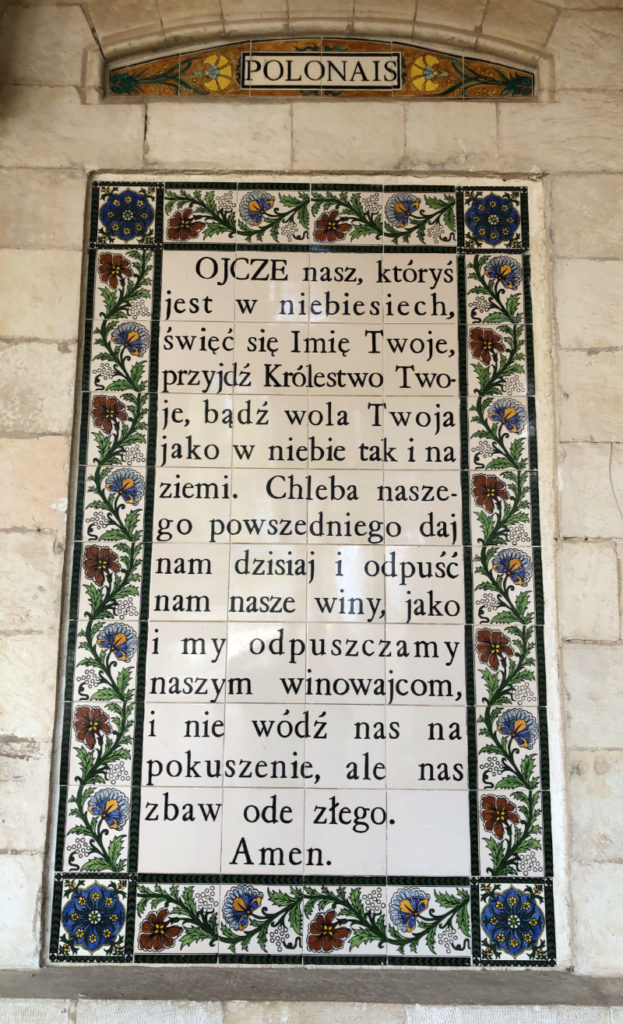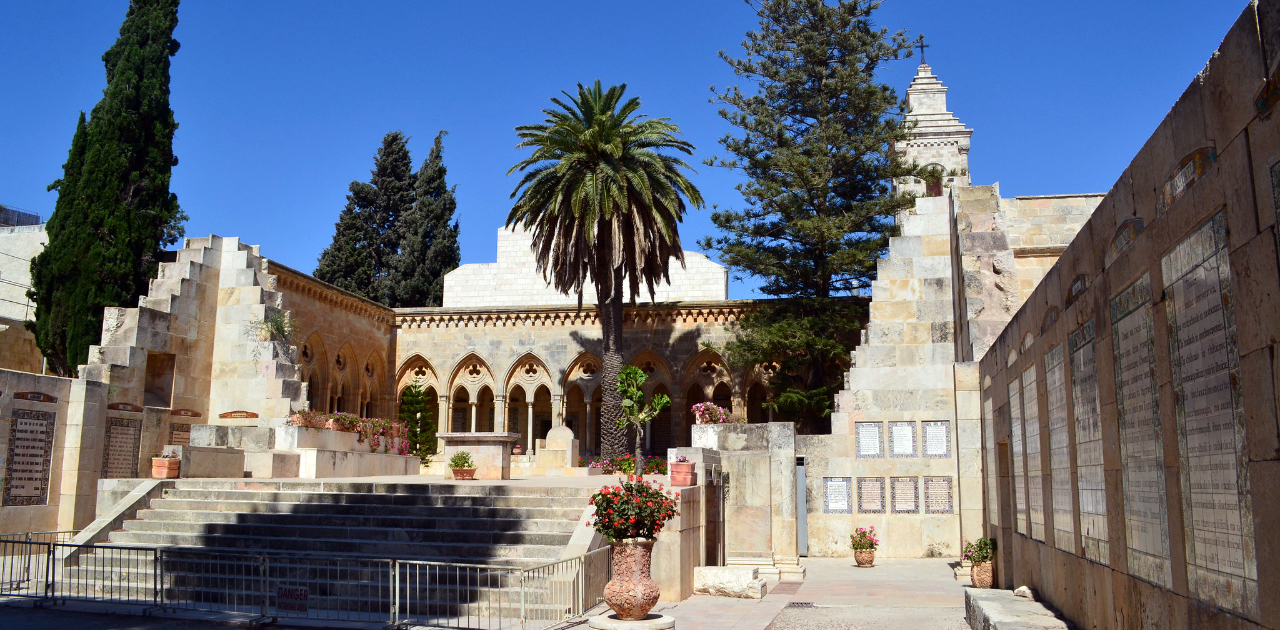On our recent Holy Land pilgrimage, as always, we visited the Mount of Olives in Jerusalem. At one of the locations there, our group got to experience one of the many special moments that come with going to the Holy Land with Faith Connections Travel—hearing the Lord’s Prayer spoken in the original language of Aramaic. Although the New Testament was written in Greek, the everyday language of Jews in first-century Judea, including Jesus and his disciples, was Aramaic. Jesus taught and gave the Lord’s Prayer in the Sermon on the Mount, for example (Matthew 5-7), in this language. There are very few communities that still speak Aramaic today.

The Pater Noster Church stands on the Mount of Olives in the place where Helena, mother of emperor Constantine, built her Eleona Church in the fourth century (since destroyed). It marked the location that she believed (according to local tradition) was the place of Jesus’s ascension to heaven (Acts 1). On the site, there is a cave that early Christians visited because they believed it to be a favorite place for Jesus to teach the disciples. Later tradition from the Crusader period recalled the location as the place where Jesus taught them the Lord’s Prayer. For this reason, the Pater Noster Church (literally, the “Our Father” Church) was built there.
One of the most striking features of the church and its courtyards is the presentation of the Lord’s Prayer on ceramic plaques in many dozens of the world’s languages. Our incredible tour guide George knows Aramaic and allowed us to hear the Lord’s Prayer much as it would have sounded when it was given by the Lord Jesus for the first time, two thousand years ago.
Featured Image “Pater Noster Church – exterior” by Larry Koester is licensed under CC BY 2.0.


